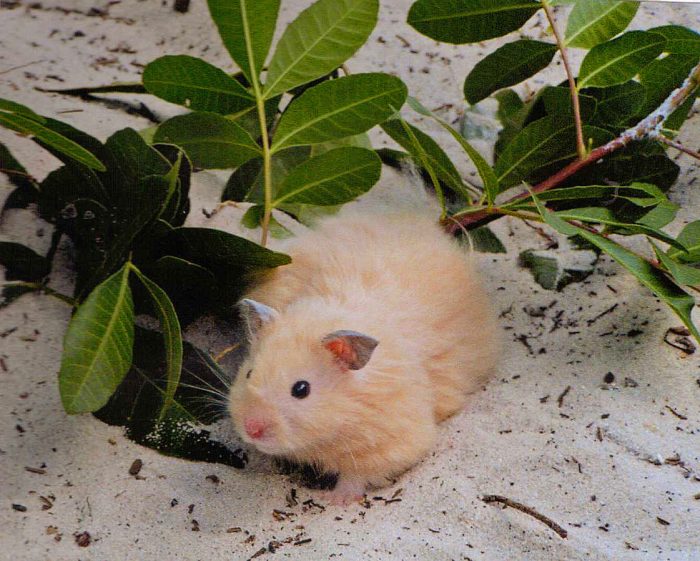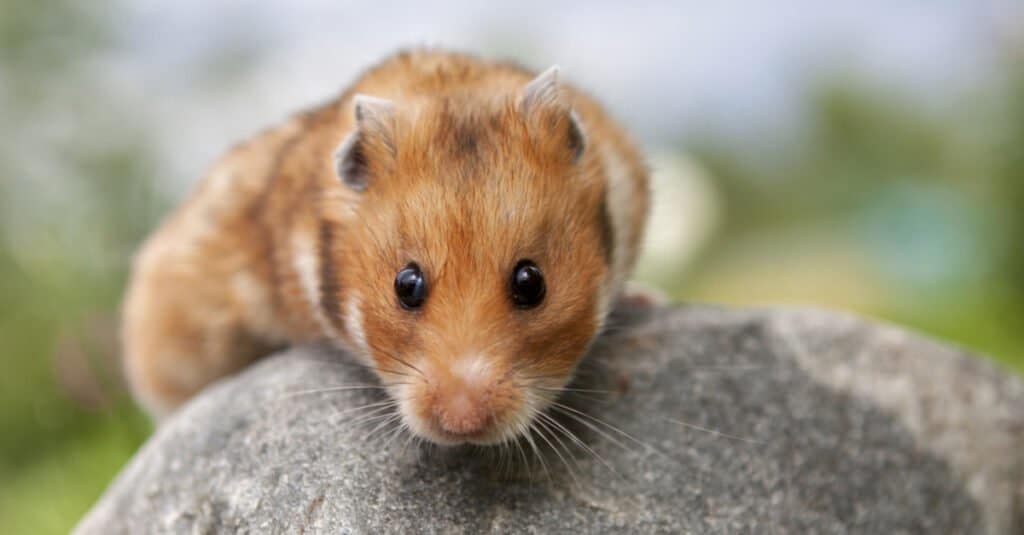Rodents, including Teddy Bear Hamsters, are the original home of these adorable creatures.
The appeal of hamsters as pets and research animals has grown throughout the years. Learn about the hamster’s life cycle in the following article.
Syrian hamsters, sometimes known as Teddy Bear hamsters, are prized for their luxuriously plush coats.
Long-haired hamsters, angora hamsters, or fancy hamsters are all frequent names for these hamsters.
The Cricetinae rodent family includes hamsters. Small and fluffy, these rodents are coated in a thick covering of fur.
Many animal enthusiasts are drawn to hamsters because of these characteristics and are happy to have them as pets.
Five-inch angora hamsters are not uncommon. In general, males are sexually mature at a younger age than women.
Angora hamsters are known for their beautiful coat, which is one of their most distinguishing characteristics.
Many different colors of gold and deep reddish-gold can be found on their coats. The length of their coat is approximately two inches.
A common behavior amongst Angora hamsters is fighting with other hamsters that also prefer to live alone.
As a result, they can also be prone to nipping if they are not properly cared for.
What is a teddy bear hamster?
Even though mice and rats are much more common in books, hamsters are by far one of the most popular pets for kids, with the teddy bear hamster at the top of the must-have list.
Teddy bear hamsters are also called Syrian bears, golden bears, or fancy bears. They are very cute and cuddly, which is probably why they are so popular as a breed.
They were first brought into captivity in the 1930s, but because they are so sweet, they quickly got used to being pets.
Are teddy bear hamsters friendly?

Teddy bear hamsters are the cutest and have the best personalities. If you start handling your hamster when it is very young, it will love being held by you.
Fancy bear hamsters are friendly, curious, and brave. They like to roam around, dig holes, and learn about their environment.
But a hamster’s friendliness can also be affected by its gender, how tame it is, and whether or not it is kept alone.
Syrian hamsters usually get very close to their owners. This is because they are solitary pets that need us to keep them entertained.
But keep in mind that they can be scared if they are startled or scared, even though they are usually happy when handled carefully.
What do they look like?
Teddy bear hamsters can grow to be between 4 and 7 inches long, making them one of the largest breeds. They are almost twice as big as dwarf hamsters.
There are many different colors, patterns, and types of fur on teddy bear hamsters. Their bodies are thick and barrel-shaped, and their short tails are almost completely covered by their long fur.
They have tulip-shaped ears that are as thin as paper and dark, round, glassy eyes on both sides of their faces.
Their small pink noses are always twitching, and their short, stumpy legs let them move quickly when they need to.
How long do they live?
The smaller a hamster is, the less time it will live. Since Syrian hamsters are the biggest breed, a teddy bear usually lives for two or three years.
Depending on how well they are cared for and how healthy they are, teddy bear hamsters can live up to five years, but this is rare.
The Guinness Book of World Records says that the oldest hamster ever lived for 7 years.
In the wild, the number of Syrian hamsters is going down because of climate change and the loss of habitat.
Because of this, it is important to keep our pet hamsters alive for as long as possible.
Teddy Bear Hamster Scientific Name
The teddy bear hamster’s scientific name is Mesocricetus auratus. Hamsters are known as Mesocricetus in Latin, while gold is known as auratus.
The long-haired Syrian hamster is also known as a golden hamster or a golden hamster. The Cricetidae are a family of tiny mammals in the order of Mammalia.
There are more than 20 different kinds of hamsters to choose from. Here are a few examples:
- Winter white dwarf hamster
- Roborovski dwarf hamster
- Chinese hamster
- Campbell’s dwarf hamster
- Turkish hamster
Breeding
Male hamsters reach sexual maturity sooner than females. After four weeks of life, they are ready to mate. Each cycle of oestrus in a female hamster can last up to four days.
This is when females emit a strong odor and white mucus from the vulva in order to entice male attention.
Once the male and female have mated, separate them since they may not be able to coexist.
Gestation Period
The gestation period for angora hamsters is the shortest, lasting between 15 and 17 days. Females bleed from the vulva a few days before the birth of their children.
5 to 10 puppies can be born from a single mother. The pups are pink and have no hair on their bodies.
Temperament
When a mother gives birth, her newborns are separated from her. This is done because hamsters have a predisposition to attack each other and their offspring.
Hamsters rarely kill their own babies, but if they are touched or disturbed by their owners, the mother will either kill or refuse to care for the baby, which is extremely rare.
How do you tame a teddy bear hamster?
You should use the same method to train your pet hamster as you would with any other hamster.
The only difference is that teddy bear hamsters are usually easier to take care of.
This is because they are bigger and stronger than dwarf hamsters, especially if you get your pet when it is very young.
Most hamsters can be tamed quickly if you handle them often and gently, but there are steps you should take to gain their full trust.
This will reduce stress and anxiety and make it less likely that fingers will be a bit.
With patience and a few treats, your nervous, furry ninja will become a happy, cuddly teddy bear hamster in a few weeks or months.
Here’s how to get your teddy bear hamster to behave.
- It’s important not to rush through the process of taming. It’s tempting to want to hold your hamster as soon as you get it, but it’s likely to be scary and confusing at first, so you should wait a few days to let it calm down and get used to its new home.
- After a few days, when your pet hamster is more comfortable around you, you can start to interact with it by feeding it treats through the bars of its cage. Once they are happy to take the treats from your fingers, you can slowly put your hands inside their cage to give them treats from the palms of your hands.
- Once your hamster is comfortable enough with you that it will come to you on its own, try to force it into a container so you can take it somewhere safe and secure to be held.
- It might be a little scary to hold them for the first time. Animals can feel and sense fear, so we suggest taking them to a safe place to play, like a playpen or a bath. You can always wear gloves if you’re afraid they’ll bite, but try to get your hamster to run up to your hands and around them while you move them forward. Just keep in mind that hamsters are very quick and can move very quickly when they want to.
Each teddy bear hamster is likely to be different, so there is no specific length of time that the taming process will take. Our advice is to simply be patient and work on building up a good bond.
Teddy Bear Hamster: 10 Interesting Facts About This Cute Animal
1) They Came to America from Syria Less Than a Hundred Years Ago
Syrian “teddy bear” hamsters, as their name implies, are native to Syria. In 1930, a naturalist named Israel Aharoui discovered them there.
They were brought to the United Kingdom and the United States in captivity by him. Popular among both British and American pet owners in the 1940s.
2) They’re Nocturnal
At night, teddy bear hamsters are lively, and in the daytime, they doze off. As a result of their natural habitat in Syria, they have this tendency.
Being active at night would have not only helped them avoid predators but also sheltered them from the blazing sun.
3) The Females Have Longer Lifespans Than the Males
Only a little bit. Female teddy bear hamsters are more likely to live to the maximum three-year lifespan than males, who typically live to two years.
4) There Are over Forty Colors of the Teddy Bear Hamster
Gold, brown, grey, white, black, cinnamon, and a slew of other hues are all represented here.
Teddy bear hamsters are available in a wide range of colors, so there is likely one to suit your needs!
5) Hips Glands Help Them See
Like most hamsters, the teddy bear hamster has poor vision. Scent glands found near the hips aid with a vision for these animals.
As they explore their surroundings, they use their hips to rub against objects and their noses to sniff everything in sight. The smell glands’ “hip spots” are referred to as such.
6) Speaking of Which, They Are Also Colorblind
Many hamsters have this feature, which is a little sad because they don’t get to see all the beautiful colors they can come in.
7) Their Teeth Never Stop Growing
It’s a common hamster trait, as well. Teddy bear hamsters, like all hamsters, require continual chewing in order to maintain their small teeth.
They prefer chewing on wood or twigs because they are rough and crunchy. Teeth that aren’t kept in check will continue to develop and pose a threat to their health.
8) Hair Grows Differently in Males and Females
Feminine animals have an extra layer of fur on their necks. It splits in the back and fluffs out around the tail. Females, on the other hand, have long, fluffy hair, while males’ hair is longer.
9) They’re Surprisingly Fragile
The teddy bear hamster, despite its bulky appearance, is surprisingly delicate.
If a coffee table or a toddler’s hands fall on them, they could suffer serious injuries. Even children should be treated with care when handling them.
10) They like to Be Alone
Hamsters that look like teddy bears live alone. However, hamsters should not be kept in a cage alongside other hamsters.
To avoid unnecessary fighting or unexpected pregnancies, it is best to keep the hamsters in separate cages.
Final Words
Our opinion is certain to be skewed, but we think teddy bear hamsters are indisputably adorable and are the ideal pets for people who are just starting out.
And now that you have learned everything there is to know about them in terms of their history, biology, behavior, and personality, we are confident that you will also agree with us.






